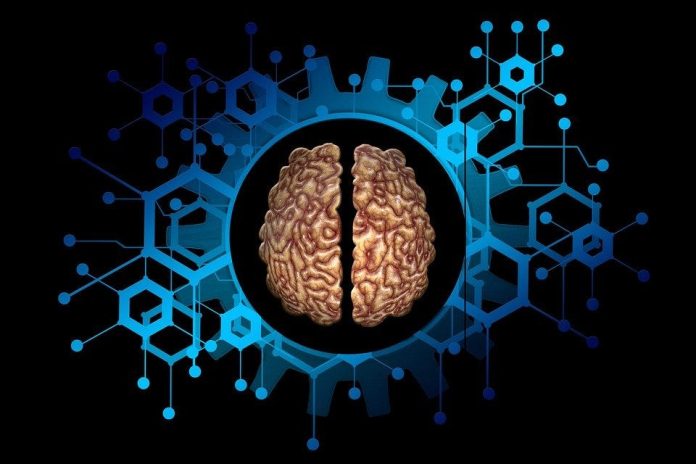On Oct., a team of researchers announced that they have discovered that brain connectivity patterns are unique to an individual and can predict a person’s level of intelligence.
The study, published in Nature Neuroscience, involved scanning the brain activity of 126 adults with functional magnetic resonance imaging (fMRI) while they performed various cognitive tasks, such as tests of language and memory skills. The adults were part of the Human Connectome Project, a five-year, $40 million initiative to map how areas of the human brain communicate with each other in 1200 people.
Researchers divided the brain scans into 268 nodes, each of which is about 2 cm^3 in size and contains on the order of 10^8 neurons. They looked for sychronized activity between nodes, and found that connectomes were significantly correlated with a person’s performance. “The more certain regions are talking to one another, the better you’re able to process information quickly and make inferences,” says Emily Finn, a doctoral student at Yale University and co-author of the study. In particular, a strong connection between the prefrontal and parietal lobes was correlated with a high fluid intelligence. Fluid intelligence of a human brain is somewhat analogous to the CPU clock rate of a computer. “They kind of underpin all of the sophisticated stuff that makes us humans to begin with,” Finn says. While there are differences in connectivity patterns in the frontal and parietal lobes, other parts of the brain are similar from person to person.
“Until this, we really didn’t know the extent to which each unique individual has a unique pattern of connectivity,” says cognitive neuroscientist Russell Poldrack at Stanford University in California. A person’s intelligence cannot be completely deduced from a brain scan at present, but “the uniqueness seems to be tied to cognitive function in some way,” says Poldrack.
At present, a scan of a person’s frontal, parietal, and temporal lobes while lying at rest in an MRI machine can be matched with a scan of the same person on another day with 98–99 percent accuracy. The accuracy drops to 80–90 percent when the person performs different tasks on different days while being scanned. It is also worth noting that brain scans only show the connections in action at a particular time; they do not explain how the connections form. “What happens in an MRI scanner isn’t what happens in daily life,” says Judy Illes, a neuroethicist at the University of British Columbia.
There are several practical applications for this discovery. One is the treatment of mental disorders, which is currently difficult because symptoms are different in each case. Studying a person’s connectome could help a psychiatrist determine the prognosis for a mental disease or the likely response that a certain drug or therapy will produce. “We have hundreds of drugs for treating neuropsychiatric illness, but there’s still a lot of trial and error and failed treatments,” Finn says. “This might be another tool.”
Other possibilities for the use of brain scans are the determination of the best educational environment for children and the detection of signs of child abuse, the detection of violent tendencies in prison inmates, and the screening of potential employees for cognitive predispositions favorable to the descriptions of the jobs they are seeking. “It’s not wrong to say there are weird ethical implications to this,” Finn says, “but we’re still a long way from doing this with enough accuracy to apply in the real world.”















